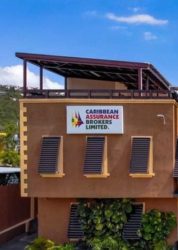In the just concluded financial year ending March, Carreras grew its income from increased volumes and some price adjustment. Operating profit climbed from $5.175 billion to $5.68 billion. Administrative distribution and marketing expenses rose from $1.745 billion to $2 billion. The company is reporting profits of $6.49 billion up from $2.6 billion in 2012.
The latest results have been impacted by a $5.08 billion inflow from the pension funds representing a portion of the pension fund surplus which was distributed to Carreras. The company reported earnings per share from ongoing business of $6.14 versus $5.35 in 2012. Most of the pension surplus was distributed to shareholders as a special dividend. Carreras also picked up foreign exchange gains of $161 million during the year up from $19 in 2012. This may or may not recur in the current financial year ending 2014 and investors will need to pay attention to that.
Tax refund | Of import, is a refund of $1.7 billion of taxes that was paid over to the government and is to be refunded plus cost of legal fees and interest. The government has made provision of half a billion in this year’s budget to pay interest on the indebtedness. The entire amount is expected to be paid out as dividend when received.
 The company’s product is not only mature but seems to be less socially accepted. The company has done most of the cost cutting hence increased profits in the future will come mostly from price adjustments. If the company is allowed to keep the price relatively stable for a while, then the possibility of picking up some volume increases may occur.
The company’s product is not only mature but seems to be less socially accepted. The company has done most of the cost cutting hence increased profits in the future will come mostly from price adjustments. If the company is allowed to keep the price relatively stable for a while, then the possibility of picking up some volume increases may occur.
At the end of the financial year, the company had cash funds of $3.9 billion, some of which will be paid out as dividend in June. Liquidity is good with current assets exceeding current liabilities $4.76 billion to $3 billion. There are no borrowed funds being used in the operations.
Income stock | The stock is essentially one for dividends with the company paying the equivalent of $5.20 per share for the year. Lower interest rates in the financial sector is likely to drive more investors to this stock for the relatively high yield, but with withholding tax at 15 percent on dividends and an unsure growth path for profits, investors may be taking on added risk to eke out a slightly higher return from the dividends paid by Carreras.
Stock outlook | At this time, the stock is price to almost perfection in earnings with a PE of 10 times the latest earnings. The price of the stock to net book value is the highest in the market at more than 11 times.
Investors in this stock should ensure that their portfolio is appropriately balanced. In other words, investors should ensure the stock does not dominate their portfolio.



















